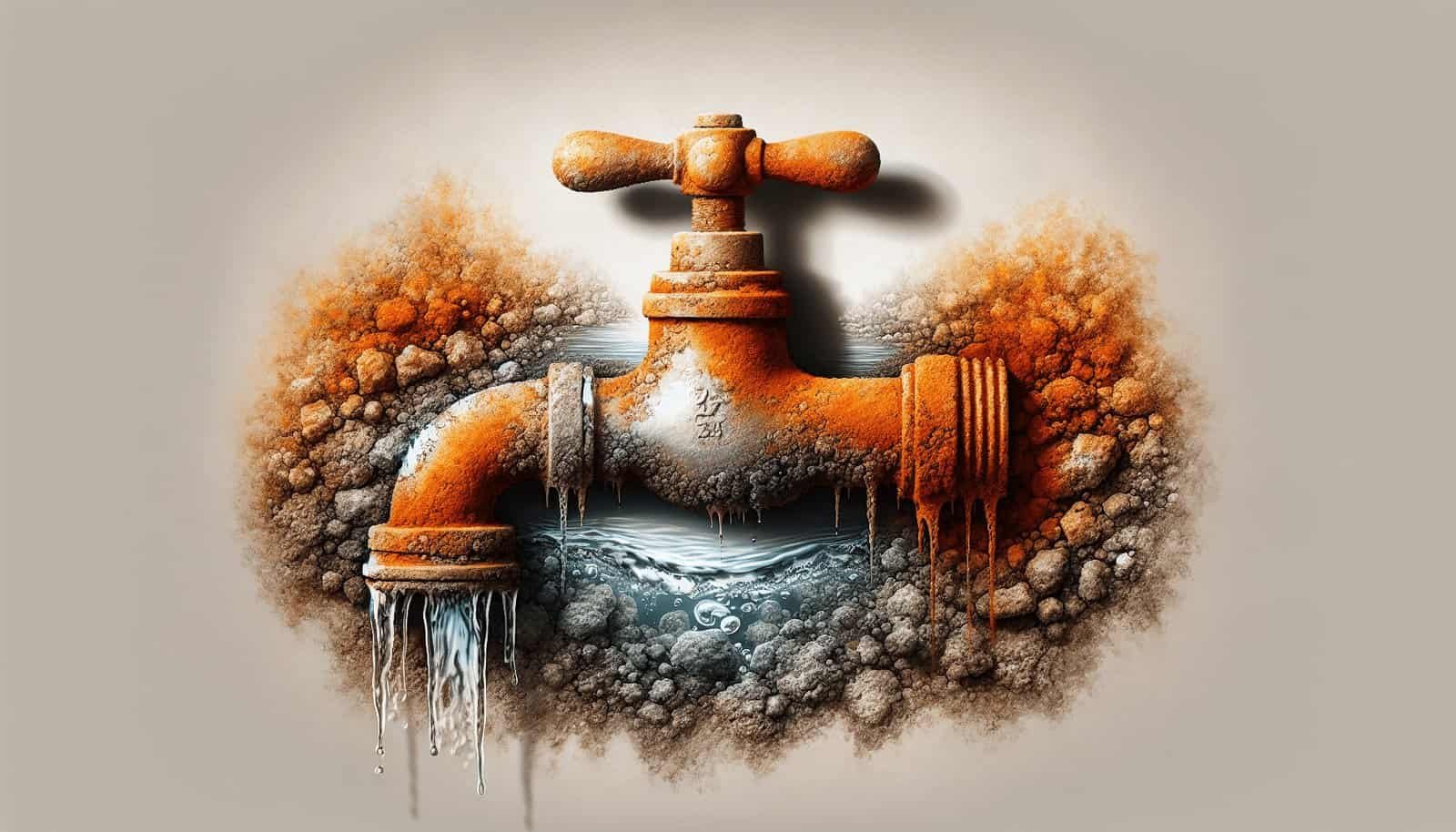Have you ever noticed unsightly orange or brown stains around your faucets, shower, or appliances? If you rely on well water, encountering these stains can be a common occurrence. But what actually causes these discolorations, and is there anything you can do about them? This discussion aims to unravel the mystery behind those pesky stains and offer insights on how you can manage them more effectively.

Understanding the Source of Well Water
Before diving into the causes of stains, it’s important to have a basic understanding of well water. If your home is supplied by a private well, you are tapping into a natural underground source. Wells draw water from aquifers, which are layers of porous rock or sediment that hold water underground. This water is filtered through many layers of soil and rock, which might sound clean, but there’s more to consider.
Composition of Well Water
Well water composition can vary significantly, depending on the geological features of your area. It often contains higher levels of dissolved minerals like iron, manganese, calcium, and magnesium. These minerals are natural and generally safe, but they can cause the unwanted stains you might see.
Why Well Logs Matter
A well log is a crucial document when you own or are thinking about digging a well. It provides detailed information about the well’s depth, the types of rock it passes through, the water levels, and the rate of water flow. This log helps in diagnosing issues related to water quality, including causes of staining, and is essential for anyone looking to maintain their well system efficiently.
Understanding your well log can help you identify why your water has certain characteristics. For instance, knowing that your well draws from iron-rich strata will explain why you’re seeing those orange stains. The log can also guide you and professionals in implementing effective water treatment options.
Iron and Manganese: The Usual Suspects
The primary culprits behind those orange and brown stains are typically iron and manganese. These minerals are naturally occurring and can be found in many groundwater supplies.
How Iron Causes Stains
When you see reddish-orange stains, you are likely dealing with iron in your water. Iron can exist in two main forms: ferrous (clear water iron) and ferric (red water iron).
Ferrous Iron: This type is dissolved in water and does not cause visible discoloration as the water comes out of the tap. However, when exposed to oxygen, ferrous iron oxidizes to ferric iron, creating rust which precipitates and stains surfaces.
Ferric Iron: Similar to rust, this type is already oxidized and can be visible as brown or red particles right from the tap.
Effects of Manganese
Manganese, while less conspicuous, causes dark brownish-black stains. In some cases, manganese presence is accompanied by a metallic taste, making water less palatable.
Both iron and manganese can contribute to the buildup in plumbing and appliances, reducing their efficiency and lifespan. Beyond aesthetics and color, high levels of these minerals can also affect the taste and odor of your water.
Testing Your Well Water
Pinpointing the cause of stains involves testing your water. Regular testing is essential, even if you don’t currently notice any problems.
Conducting Water Tests
A comprehensive water test will assess the levels of various minerals and pollutants. These tests identify the types and concentrations of minerals such as iron, manganese, calcium, magnesium, alkalinity, pH levels, and more.
Conducting tests:
- Home Test Kits: These are widely available and an initial step for basic mineral testing.
- Professional Laboratory Testing: For more detailed analysis, consulting professionals who can provide in-depth reports is advisable.
Frequency of Testing
Experts recommend testing well water at least once a year. However, testing should be conducted more frequently if you notice changes in water quality or have recently experienced natural events such as flooding, which can alter aquifer conditions.
Solutions to Minimize Staining
If your water tests reveal high levels of iron or manganese, there are various solutions you can explore. The appropriate solution depends on the specific type and concentration of minerals in your water.
Water Filtration Systems
Filtration systems can effectively remove minerals from your water. Several options are available:
- Sediment Filters: These are used for large particles and can remove some amount of ferric iron and manganese without altering water chemistry.
- Oxidizing Filters: These use materials like manganese greensand to convert dissolved iron and manganese into solids that can be filtered out.
- Reverse Osmosis Systems: These systems provide thorough filtration suitable for small daily drinking water supply due to their lower output.
- Water Softeners: Although primarily used for hard water, these can help in reducing iron and manganese depending on the water chemistry.
Chemical Treatments
Chemical treatments alter the composition of minerals:
- Chlorination: Adding chlorine helps oxidize dissolved iron, making it easier to filter out.
- Potassium Permanganate: Used with greensand filters, this chemical oxidizes iron and manganese for filtration.
- Hydrogen Peroxide: This chemical acts quickly to oxidize and remove iron from the water supply.
Regular System Maintenance
Regardless of the treatment method, regular maintenance of your well system is necessary to ensure ongoing water quality:
- Clean and replace filters as recommended.
- Monitor changes in water quality and address new issues promptly.
- Ensure proper function of water treatment systems through professional check-ups.

Prevention and Management Strategies
While treatment and maintenance are effective, preventative strategies are also beneficial. These include:
Altering Household Habits
Small changes in your routine can minimize the impact of iron and manganese deposits:
- Use a water filter pitcher for drinkable water as a quick fix.
- Wipe down appliances and sinks immediately after use to prevent stain setting.
- Opt for stainless steel or dark appliances, which show less staining.
Water Softener and Filtration System Linked Approach
Consider installing a combination of water softeners and filtration systems for comprehensive protection. The water softener reduces mineral burden, and the filter focuses on specific pollutants providing two layers of treatment.
Understanding the Impact Beyond Just Stains
While stains and mineral buildup cause primarily surface-level concerns, understanding the broader impact of iron and manganese is crucial:
Appliance Efficiency
Rust and mineral deposits can decrease efficiency and increase energy consumption in water heaters, dishwashers, and washing machines, eventually leading to costly breakdowns.
Plumbing Integrity
Mineral buildup can clog pipes and reduce water flow, potentially leading to plumbing repairs or replacements. Addressing water quality issues early on preserves plumbing systems and reduces costs.
Health Considerations
Iron and manganese in drinking water pose minimal health risks at common levels. However, excessive concentrations can sometimes lead to gastrointestinal upset. Families relying solely on well water should take additional care to ensure balance and safety, particularly if any household member has a sensitive digestive system.
Taste and Aesthetics
Lastly, water with high mineral content can change how foods and beverages taste, affecting meal and drink enjoyment. Addressing these issues can improve both the practical and sensory experience of your home’s water.

Conclusion
Stains from well water are more than just an aesthetic issue; they can signal significant mineral content that affects many aspects of home life. Fortunately, understanding the causes—iron and manganese primarily—and how to test and treat your water can drastically improve both your home’s water systems and quality of life. By focusing on regular testing, appropriate treatment solutions, and preventative practices, you can manage these challenges effectively and ensure your well water remains a reliable and positive feature of your home.

